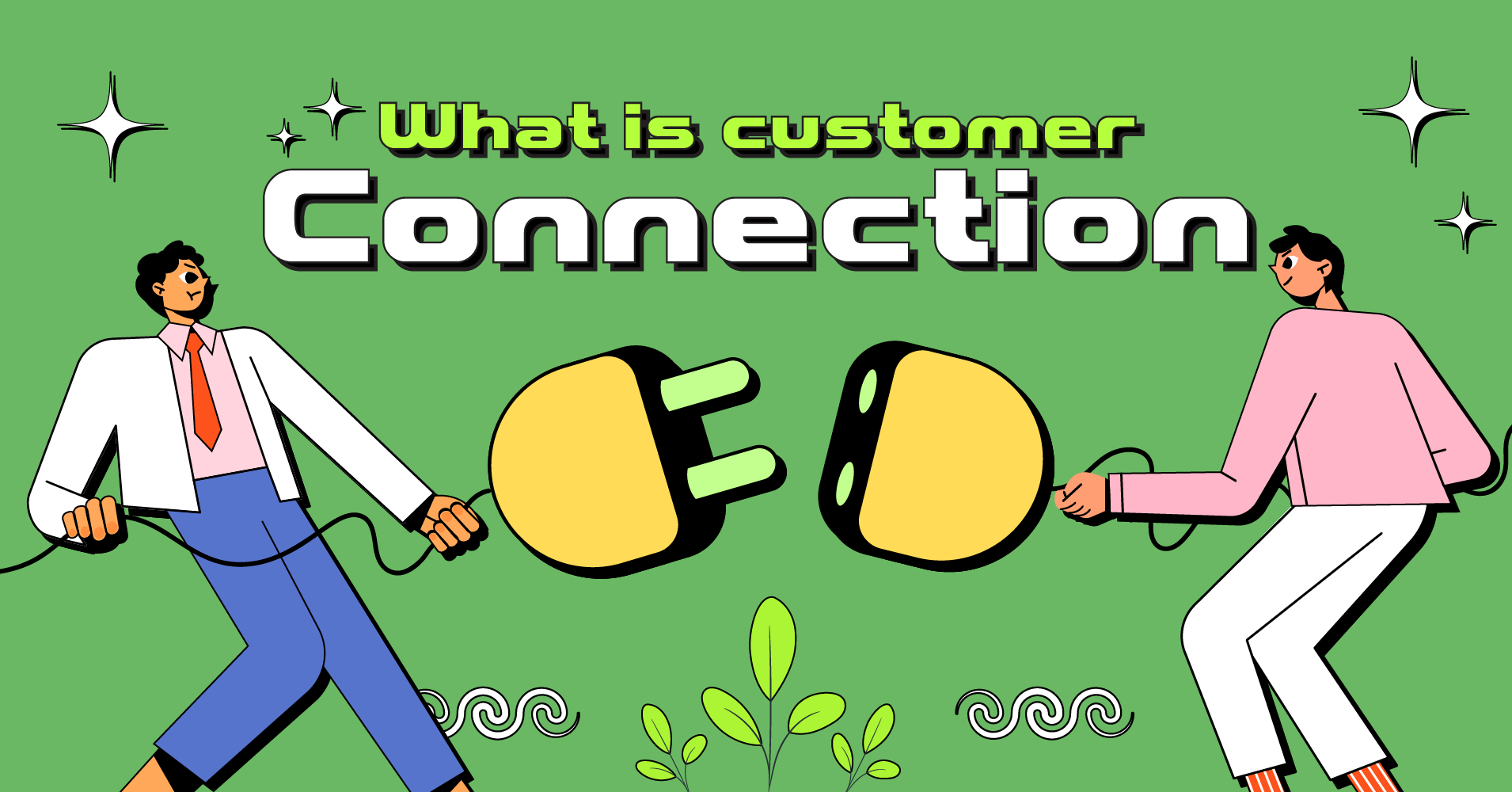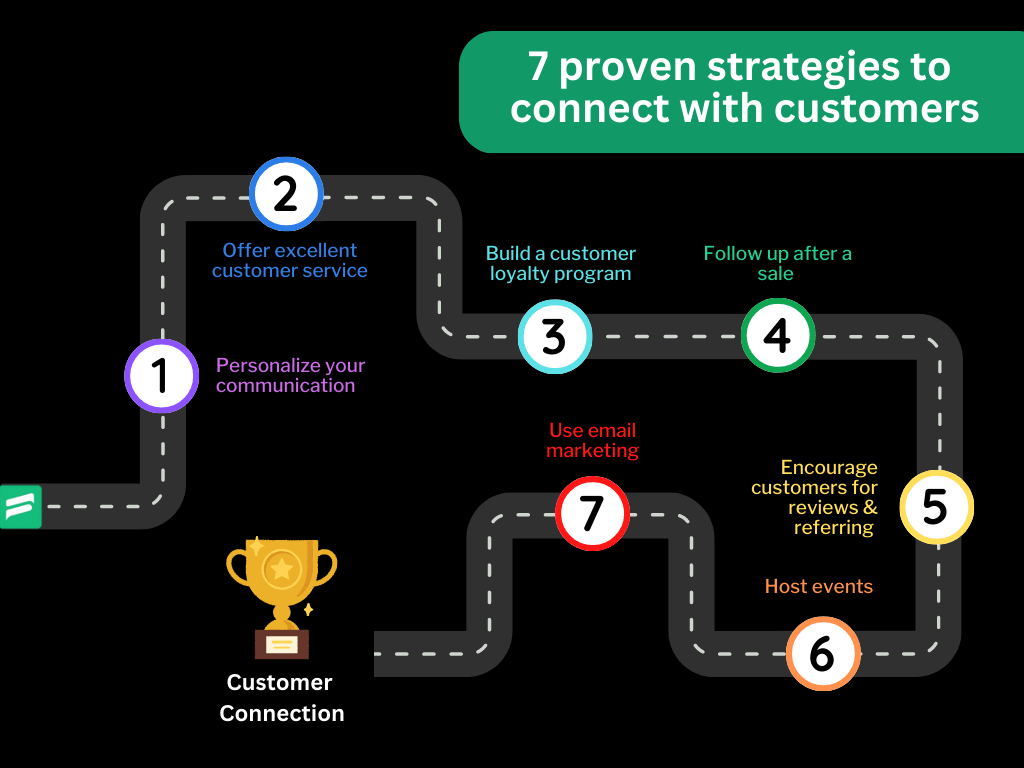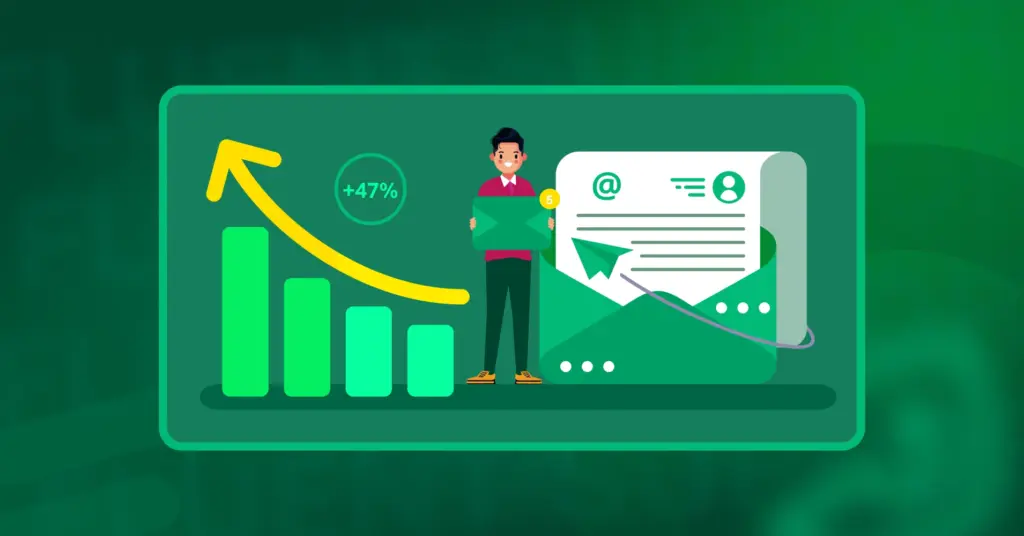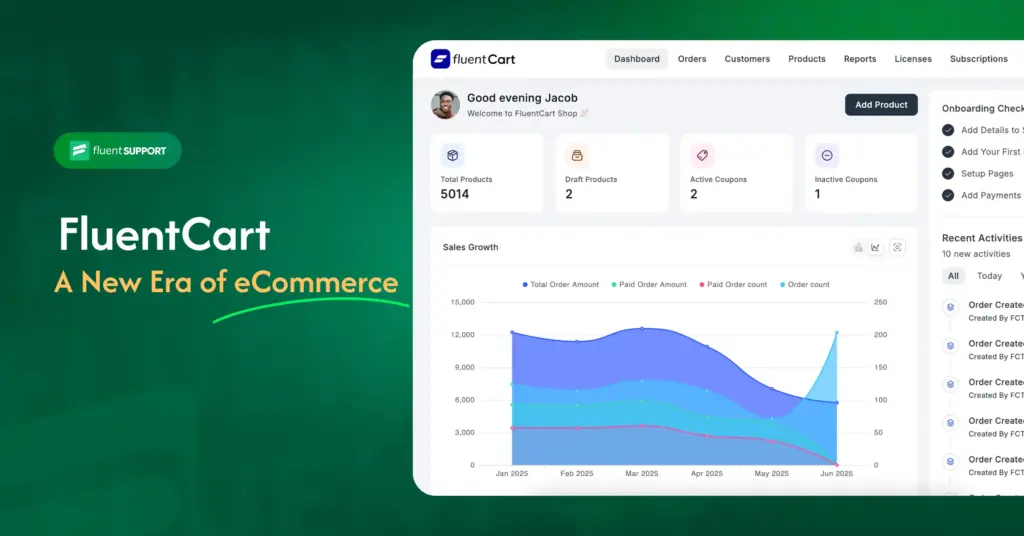
Customer Connection: 8 Strategies to Connect with Your Customers
Maintaining strong connections with your customers is more important than ever in today’s digital age. But with so many distractions and competitors vying for their attention, it can be challenging to stand out. And also to build lasting relationships with your customers.
In this blog, we will share practical tips and strategies for building customer connections that are meaningful, authentic, and effective. Also, we’ll explore the importance of understanding your audience, being present, and being responsive.
Moreover, we’ll see how you can go above and beyond to meet their needs. We’ll be delving into the role of technology and social media in connecting with customers and how to use these tools effectively to build trust and loyalty.
By the end of this post, you’ll have a clear understanding of what customer connection is and how to connect with your customers. Also, this will be in a way that skyrockets your business and drives long-term success. So, let’s dive in!
What is customer connection?
Customer connection is the bond that is formed between a business and its customers. The relationship is built over time through consistent and positive interactions, communication, and experiences.
Think of it as a bridge that connects the two parties – the business, representing the solid foundation, and the customer, representing the flowing water that passes over it.
Like the bridge, customer connection must be strong and well-maintained to withstand the test of time and the elements.
A strong customer connection can differentiate between a one-time transaction and a loyal, long-term customer. Moreover, it can increase customer satisfaction, higher customer retention rates, and even positive word-of-mouth marketing.
Businesses must focus on delivering excellent customer service to build and maintain a customer connection. Being responsive to customer needs and feedback. Also, going above & beyond to create a positive customer experience.
The customer connection is about building trust, understanding, and mutual respect between a business and its customers. So, it is the foundation upon which a successful and sustainable business is built.
The importance of customer connection
Establishing a human connection with your clients is essential for building customer loyalty and providing a great customer experience.
In fact, a study by Sprout Social found that when customers feel connected to a brand, 57% will increase their spending with that company, and 76% will choose to purchase from them over a competitor.
It demonstrates the direct impact investing in a relationship with consumers can have on business revenue and customer loyalty.
Therefore, it is essential to make building a connection with your customers a priority, as it benefits both your customers and your business.
By creating a positive, personalized customer experience, you can foster long-term relationships with your clients and encourage them to continue doing business with you.
8 proven strategies to connect with customers
Here are 8 proven strategies to connect with your customers and establish long-term relationships that will keep them loyal to your brand.

1. Personalize your communication
Personalizing your customer communication is a powerful way to foster relationships and increase customer loyalty. Here are a few ideas for personalizing your communication:
- Use the customer’s name: Anytime you can use the customer’s name to establish a more personal relationship.
- Customize your messaging: Tailor your message to the customer’s specific needs and interests. For example, if you know a customer is interested in a specific product or service, emphasize those features in your communication.
- Segment your customer base: Divide your customer base into different groups based on characteristics such as demographics, location, or purchase history, and create customized messaging for each group.
- Use customer data: Utilize general and support data about your clients, like purchase history or website visiting patterns, to tailor your communications and make them more pertinent to them.
- Offer personalized recommendations: Make customized recommendations to customers based on their interests and requirements using data and customer feedback.
2. Offer excellent customer service
To establish an everlasting relationship with your customers, you must provide top-notch customer service. Here are some methods you may use to make sure your customer service is excellent:
- Respond promptly: Make sure to reply to customer inquiries and complaints as quickly as possible. This helps show customers that you really value their time and you are committed to addressing their requirements.
- Be friendly and helpful: Make sure your customer support agents are approachable and eager to go above and beyond to help their clients.
- Resolve issues efficiently: When a consumer has a problem or a worry, it’s crucial to find a speedy and effective solution. The customer’s entire experience can be enhanced and frustration levels decreased as a result.
- Train your team: Make sure your customer support agents are prepared to respond to a wide range of questions and issues from customers. It will help ensure that the company is able to offer each customer a solid level of service.
- Use multiple channels: Make sure your customer care employees are accessible to customers via a variety of channels, including email, phone, and social media. Customers may find it simpler to contact you and have a better overall experience as a result.
3. Build a customer loyalty program
Building a customer loyalty program can effectively reward your most loyal customers and encourage repeat business. Here are a few key components to consider when building a customer loyalty program:
- Rewards: Offer rewards that are meaningful and valuable to your customers. This could be discounts, free products, or exclusive access to special events or promotions.
- Points or tiers: Consider using a point or tier system to reward customers based on their level of loyalty. This can help encourage customers to continue doing business with you and reach higher tiers for even better rewards.
- Communication: Keep your customers informed about their loyalty program status and rewards. This can help keep them engaged and motivated to continue participating.
- Simplicity: Make sure your loyalty program is easy to understand and participate in. If it’s too complicated, customers may be less likely to participate.
- Exclusivity: Consider offering exclusive rewards or perks to your most loyal customers. This can help make them feel special and valued and encourage them to continue doing business with you.
4. Follow up after a sale
Ensuring your consumers are happy with their purchases and identifying any potential problems that may need to be fixed after the sale is vital. Here are some pointers for maintaining contact after a sale:
- Check-in with the customer: Reach out to them a few days after their purchase to see how they enjoy their product or service. This can help you identify any issues that may have arisen and address them promptly.
- Solicit feedback: Request comments from the customer regarding their shopping experience. By doing this, you can make sure that you are satisfying the needs of your clients and discover areas for improvement.
- Offer support: Make sure the customer knows you are available to assist them if they have any issues or questions about their purchase. This can help build trust and strengthen the customer-brand relationship.
- Encourage repeat business: Let customers know about upcoming promotions or new products that may interest them. This can help encourage them to continue doing business with you.
- Keep in touch: Stay in touch with the customer after the sale to inform them about new products or services or to check in and see how they are enjoying their purchase.
5. Encourage customers for reviews & referring
Encourage your customers to leave reviews to help you collect feedback, improve your business accordingly, and build trust with potential customers. Here are a few ideas for encouraging customer reviews:
- Make it easy: Make it easy for customers to leave reviews by providing clear instructions and links to review sites.
- Follow up after a sale: Reach out to customers a few days after their purchase and ask if they would be willing to leave a review. This is a good opportunity to solicit feedback and address any concerns the customer may have.
- Respond to reviews: Respond promptly to both positive and negative reviews. This shows that you value customer feedback and are willing to address any issues that may arise.
- Use reviews in your marketing: Share positive reviews on your website or social media channels to showcase customer satisfaction and build trust with potential customers.
- Offer incentives: Consider offering incentives, such as discounts or free products, to customers who leave reviews. This can help encourage more people to leave reviews and provide valuable feedback.
- Create a customer referral program: Encourage your customers to refer friends and family to your business by offering them incentives, such as discounts or free products.
6. Host events
Hosting events can be a powerful way to connect with customers and create opportunities for them to engage with your brand. Here are a few tips for hosting successful events:
- Choose the right location: Select a location that is convenient and accessible for your customers.
- Plan the event carefully: Make sure to plan every aspect of the event, including logistics, scheduling, and content, in advance.
- Promote the event: Use a variety of channels, such as email marketing, social media, and traditional advertising, to promote the event and encourage people to attend.
- Offer value: Check that the event provides value to attendees. This could be educational content, networking opportunities, or simply a chance to have fun and relax.
- Follow up after the event: Reach out to attendees after the event to thank them for coming and to gather feedback. This can help you improve future events and keep your customers engaged.
7. Use email marketing
Email marketing is a powerful way to reach customers and keep them informed about your products, services, and promotions. Here are a few tips for using email marketing effectively:
- Segment your email list: Divide your email list into different groups based on characteristics such as demographics, location, or purchase history. This allows you to send targeted, relevant messages to each group.
- Personalize your emails: Use the customer’s name and tailor your messaging to their needs and interests. This helps create a more personal connection and makes the email more relevant to the customer.
- Use a clear subject line: Make sure your email’s subject line clearly communicates the email’s content and entices the customer to open it.
- Keep it brief: Ensure your emails are concise and to the point. Customers are more likely to read and engage with brief and focused emails. So, summarize the email by eliminating all the unnecessary words and details.
- Include a call-to-action: Make sure to include a clear call-to-action in your emails, such as “Shop now” or “Learn more.” This helps encourage customers to take the next step and engage with your business.
- Test and optimize: Test versions of your emails to see which ones perform the best, and use this information to optimize your emails for better results.
8. Offer customer self-service
In the modern business landscape, customer self-service is an invaluable strategy for building and strengthening connections with your customers.
By providing customers with the tools and resources they need to find answers and solve issues on their own, you not only enhance their satisfaction but also foster deeper loyalty to your brand.
Here are some essential tips to incorporate this strategy:
1. Use AI-powered tools: Chatbots and AI-powered virtual assistants make it easy for customers to get answers to FAQs and their requests. They take a few seconds to answer and ensure that customers are left satisfied with the solution.
2. Introduce multichannel access: Offer self-service across various platforms for a consistent customer experience.
3. Provide personalization: make sure to use customer data to personalize self-service experiences.
4. Offer proactive solutions: Anticipate common issues and provide solutions before customers ask, based on data analysis.
Wrapping up
Lastly, implementing these strategies can help you build trust with your customers and encourage repeat business.
You can create a positive and personalized experience that keeps customers coming back for more by taking the time to understand your customer’s needs and preferences. Also, these will help you tailor your interactions to meet those needs.
Thank you for your time.












Leave a Reply